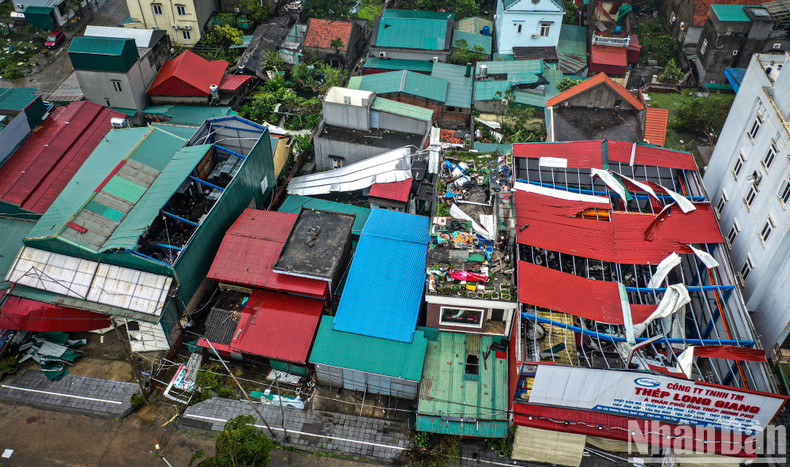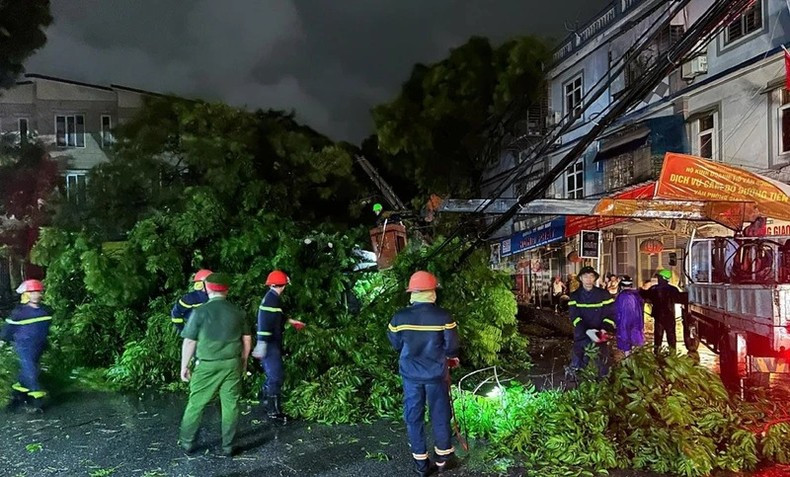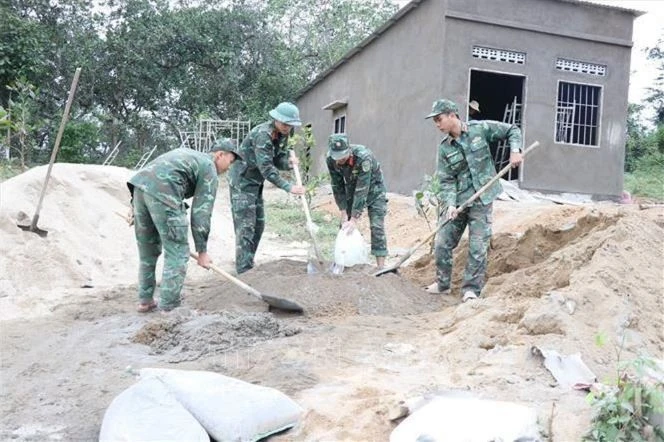By 1 am on September 9, the centre of the tropical depression was at approximately 22.1 degrees North latitude and 101.8 degrees East longitude, over the highlands of northern Laos.
The strongest winds near the centre moved west-northwestward, at about 15 km/h and gradually weakened into a low-pressure system. Affected areas include the western part of the Gulf of Tonkin and northern Vietnam, with a risk level of 3.
At sea, the Gulf of Tonkin (including the island districts of Bach Long Vy and Co To) will experience strong winds of force 6-7, with gusts up to force 9, causing rough seas.
On land, the inland northern regions will see strong winds of force 6-7, with gusts up to force 9. Waves in the Gulf of Tonkin (including Bach Long Vy and Co To) will reach heights of 2-3 metres. From the afternoon of 8th September, waves are expected to subside gradually.
On the afternoon and evening of September 8, in the northeastern region and Thanh Hoa, moderate rain and thunderstorms are expected, with localised heavy rain ranging from 20-50 mm, and some areas exceeding 100 mm. In the mountainous regions, heavy rain is forecast, with some areas receiving 60-120 mm, and isolated zones over 250 mm.
On the early morning of September 8 and 9, heavy to extreme rain is expected in the northwestern region, with rainfall ranging from 100-200 mm, and some areas exceeding 400 mm. This heavy rain may cause flooding in low-lying areas, flash floods in small rivers and streams, and landslides on slopes.
 |
| Heavy rain and strong winds knocked down hundreds of metres of walls and fences and caused many houses to lose roofs in Quang Ninh Province |
* Typhoon Yagi, the third to enter the East Sea/South China Sea this year, caused widespread power outages in Hai Phong, Quang Ninh, Thai Binh, and Hai Duong. Many houses were damaged or had roofs blown off, and thousands of trees were uprooted in Quang Ninh, Hai Phong, Thai Binh, Hai Duong, Hanoi, Bac Ninh, and Bac Giang.
After landfall in the Quang Ninh-Hai Phong area, typhoon Yagi brought strong winds and heavy rain. The strongest winds near the storm's centre reached levels 11-12 (103-133 km per hour), with gusts hitting level 15.
Several areas recorded significant rainfall, such as Co To Island of Quang Ninh (127mm), Cat Ba District, Hai Phong City (198mm) and Tien Hai District, Thai Binh Province (208mm).
As of the afternoon on September 7, three fatalities and 58 injured people were recorded in Quang Ninh Province, with one death in Hai Duong Province.
On September 7, heavy rain and strong winds began around 3 pm in Hanoi. By 11 pm, Typhoon Yagi had claimed three lives and injured eight others. Nearly 2,800 trees were uprooted across the capital city. Heavy rain and strong winds knocked down hundreds of metres of walls and fences and caused 19 houses to lose roofs.
 |
| Functional forces help with the clearance of fallen trees. (Photo: NDO/Ngoc Long) |
* Deputy Prime Minister Tran Hong Ha has instructed localities directly affected by Typhoon Yagi to maintain communication and urgently provide accurate assessments of the storm’s damage.
He also emphasised the need for swift coordination with relevant forces to develop search and rescue plans for those missing or injured. He stressed that all available resources and means must be deployed as quickly as possible to locate those still missing.
The Government official warned coastal localities against complacency, particularly as the storm’s remnants are expected to bring heavy rain. Localities should promptly devise plans to mitigate the storm's aftermath.
Special attention should be paid to rainfall from the storm’s remnants to prevent landslides that could pose a danger, he asked.
















